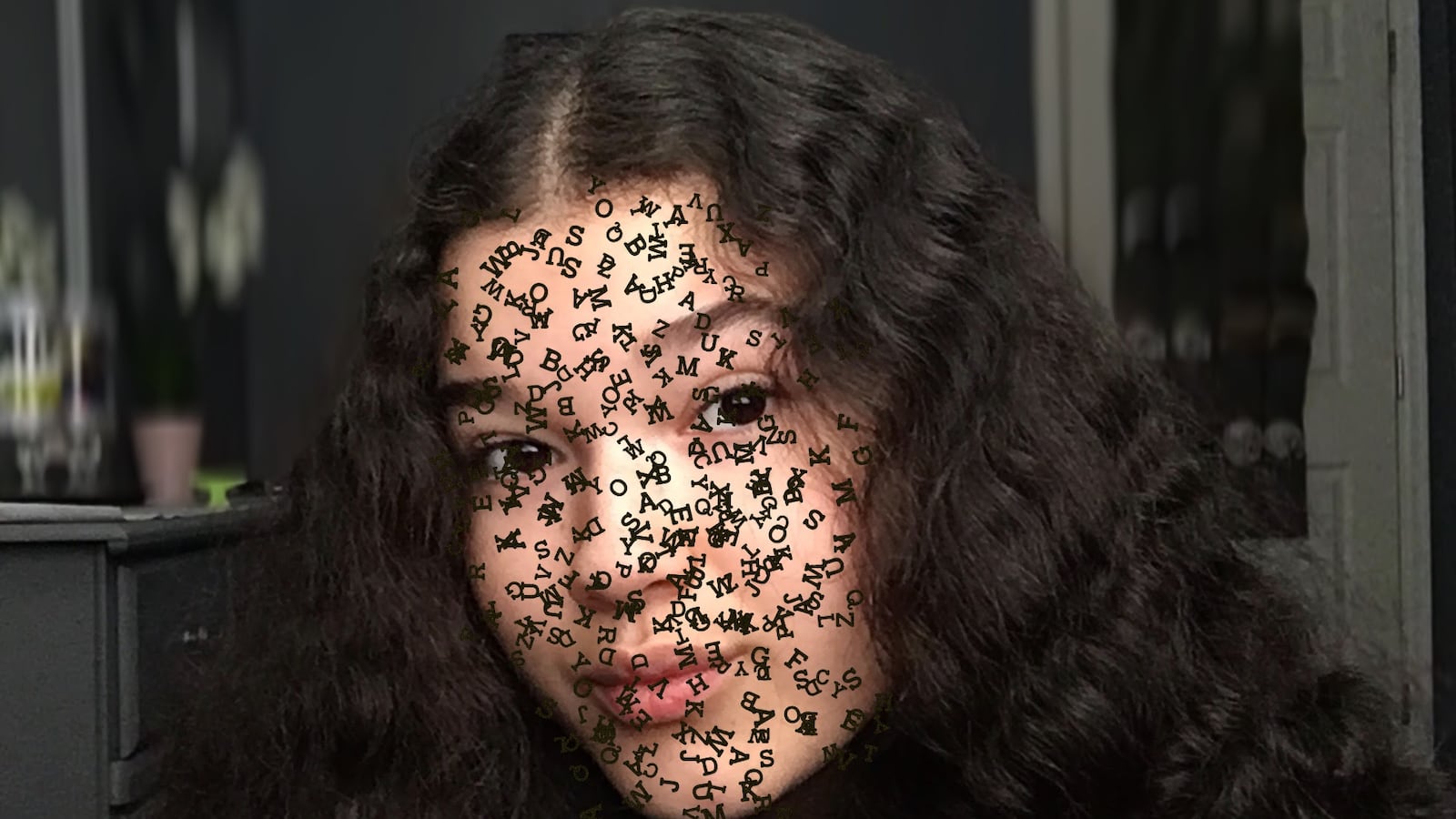Casandra Sotelo Rivera is often the first student to log on to her daily video calls at 7:40 a.m. Class doesn’t actually start until 8 a.m., but her teachers reserve the first 20 minutes for students who want to talk. Shy and quiet in person, Casandra is the type of kid who takes school seriously but almost never raises her hand or volunteers what she’s thinking.
It’s different online. From the comfort of her bedroom, with an avatar of little white flowers substituting for her face, the Denver ninth grader is tiptoeing toward talkative, swapping stories with her teachers and classmates about school or the best shows on Netflix.
But she almost never turns on her camera. Only in one class will she sometimes brave it: photography, which is her favorite class this semester at Dr. Martin Luther King, Jr. Early College, a 900-student middle and high school she’s attended since sixth grade.
“I feel really comfortable in that class,” the 14 year old said.
That’s maybe why, for her first photo assignment, Casandra took a risk.
Virtual vs. in-person learning
Casandra is a student in Denver Public Schools, Colorado’s largest school district. Uncertainty about whether school buildings would reopen this fall reigned for much of the summer, as COVID-19 cases in Denver went up and down. Ultimately, the district decided to start the school year completely online with a goal of gradually bringing students back in person.
Many educators see drawbacks to remote learning. It can be inequitable: Students with fast internet connections can easily access online classes, while students without the internet cannot. Similarly, teachers with tech savvy could provide quality lessons right away when schools pivoted online in March. Other teachers floundered, resulting in an academic experience for students that was more uneven than usual.
But even the best online instruction lacks some of the ingredients that, when done well, keep kids engaged in school. That includes the ability for teachers to connect face-to-face with students, and the ability for students to do the same with each other.
Denver elementary school students have begun returning to classrooms in recent weeks, but it’s far more challenging for high schools to offer in-person classes due to limits on the number of students and teachers who can interact. Nearly all Denver high schools, including Casandra’s, hope to open their buildings to students who crave being in a school setting, though many students will continue to receive the same online instruction they’ve been getting at home.
But what about the students for whom in-person interactions cause stress? The introverted kids who dread giving front-of-the-classroom presentations? From the very beginning of the pandemic, teachers have said that while many of their students are struggling with remote learning, a smaller number have come into their own.
Nerves and bravery
One of Casandra’s first assignments in her photography class was to take a photo of something others might think is ugly but you think is beautiful.
“I immediately thought about my hair,” she said.
Casandra has curly hair like her father and older sister. Her sister straightens hers so it looks more like their mother and younger sister’s long locks. But Casandra has always liked her curls.
She had braided her hair the night before after showering, making it extra curly. Before taking the photo, she unbraided and brushed it a little so it looked “fuzzy.” Casandra doesn’t have a proper camera of her own, so she’s been using her phone. Sitting in a sunny spot by the window in her older sister’s bedroom, she took several snaps on her iPhone.
With a filter from an app she downloaded, Casandra partially obscured her face, covering it with tiny black letters. The effect makes it look as though she’s peering out from behind a lace veil.
When it came time to share her photo with class, Casandra was nervous. Most of her classmates had taken photos of inanimate objects like leaves and trash cans. Her teacher shared Casandra’s photo on the screen, and Casandra began to speak with her camera off.
“I was super nervous behind the camera, but when I was talking they couldn’t see me so they couldn’t see I was nervous,” she said. Her message? Don’t judge yourself. “If people don’t like their hair, I wanted them to know it’s okay to love your hair,” she said.
The reaction from her classmates was overwhelmingly positive, she said. They complimented her photo and said they appreciated what it conveyed. Casandra felt brave.
“I feel like I’m a whole different person when I’m doing things online than when I’m not,” she said.
Denver Public Schools announced earlier this week that it would delay reopening middle and high school buildings until early November due to rising COVID cases citywide. In anticipation of the reopening, the district asked students to decide whether or not they wanted to attend school in person. Casandra said the choice was easy for her.
She’ll stay online.


